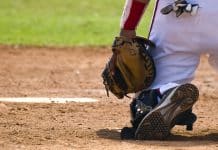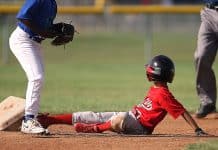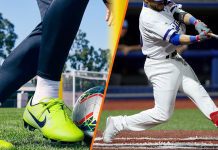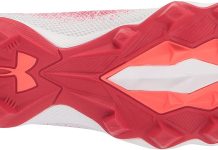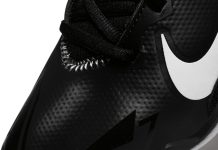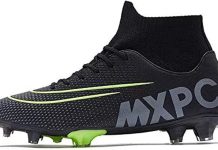When it comes to choosing the right footwear for your sporting endeavors, understanding the subtle distinctions between various types of cleats can make all the difference. One key question that often arises is: what sets baseball cleats apart from their counterparts? The answer lies in the design and construction of baseball cleats, which are specifically engineered to enhance traction, agility, and performance on the diamond. Unlike other cleats, baseball cleats feature shorter, metal or plastic spikes strategically placed on the sole, providing unparalleled grip and stability during the rapid movements required in the game. So, whether you’re gearing up for a baseball game or simply curious about the uniqueness of baseball cleats, let’s explore the distinguishing features that make them stand out in the world of athletic footwear.
Design
Review contents
Baseball Cleats
Baseball cleats are specifically designed for the sport, taking into account the unique movements and requirements of the game. They typically feature a low-top design with a rounded toe and narrow heel to provide better traction and agility on the field. The cleats on baseball shoes are strategically placed along the sole to optimize stability and traction during quick sprints, abrupt stops, and swift changes in direction. The design of baseball cleats focuses on enhancing performance and reducing the risk of injuries.
Other Cleats
On the other hand, other cleats refer to footwear designed for various sports and outdoor activities such as soccer, football, and track and field. Unlike baseball cleats, other cleats come in a variety of designs, including low-top, mid-top, and high-top styles, depending on the specific requirements of the sport. The design of other cleats is often based on considerations such as ankle support, protection, comfort, and overall performance in the specific sport or activity they are intended for.
Material
Baseball Cleats
Baseball cleats are typically made with durable synthetic materials or genuine leather, which offer a combination of flexibility, support, and breathability. The upper part of the cleats is designed to provide a snug fit and allow for natural foot movement while maintaining stability. The materials used in baseball cleats are resistant to wear and tear, ensuring longevity even with regular use on different playing surfaces.
Other Cleats
Materials used in other cleats may vary depending on the sport or activity for which they are designed. Common materials include synthetic fabrics, mesh, leather, or a combination of these materials. The choice of material depends on factors such as breathability, durability, and the level of protection needed for the specific sport or activity.
Spike Type
Baseball Cleats
Baseball cleats have specialized spikes or studs on the sole to provide traction and grip on grass and dirt surfaces. The spikes are typically made of metal or hard plastic and are strategically positioned to optimize traction during movements such as running, fielding, and sliding. The spike type may vary based on personal preference or the playing conditions, with options including metal, molded plastic, or a combination of both.
Other Cleats
The spike type of other cleats differs depending on the sport or activity. For example, football cleats often have molded rubber spikes for traction on turf or grass, while soccer cleats may have bladed or conical studs for better balance and maneuverability on the field. The spike type is designed to cater to the specific requirements of the sport, providing optimal grip and stability.
Traction
Baseball Cleats
Traction is a crucial aspect of baseball cleats, considering the quick and agile movements required in the sport. The specialized spikes on baseball cleats offer excellent traction on grass and dirt surfaces, allowing players to accelerate, change direction, and stop quickly without slipping. The design of the cleat’s sole, the materials used, and the spike type all work together to enhance traction and ensure optimal performance on the field.
Other Cleats
Traction requirements vary across different sports and activities, and other cleats are designed accordingly. Football cleats, for example, are designed to provide traction on various field conditions, including turf and natural grass. The cleat patterns and spike type are optimized for quick movements, cuts, and lateral stability. Similarly, soccer cleats require good traction on grass, while track and field cleats focus on lightweight designs and spike configurations that provide grip on different track surfaces.
Durability
Baseball Cleats
Durability is an essential aspect of baseball cleats due to the demanding nature of the sport. Baseball cleats are designed to withstand the rigors of playing on different surfaces, including grass, dirt, and turf. The materials used, such as synthetic fabrics or genuine leather, are chosen for their durability and resistance to wear and tear. Proper care and maintenance, such as regular cleaning and storing in a dry place, can further extend the lifespan of baseball cleats.
Other Cleats
The durability of other cleats can vary depending on the intended sport or activity. Cleats designed for sports like soccer, rugby, or lacrosse, which involve heavy contact and frequent changes in direction, require durable materials to withstand the demands of the game. However, other cleats designed for less intense activities, such as hiking or casual outdoor use, may prioritize comfort and style over maximum durability.
Support
Baseball Cleats
Baseball cleats provide a good amount of support to the foot and ankle. The design of baseball cleats takes into consideration the lateral movements, quick direction changes, and potential ankle sprains that can occur during the game. The snug fit, padded lining, and overall structure of baseball cleats offer stability and support, reducing the risk of injuries during play.
Other Cleats
While support is important in many sports, the level and type of support provided by other cleats can vary. Cleats designed for high-impact sports such as football and rugby often feature additional ankle and heel support to prevent injuries. Conversely, cleats designed for sports like track and field or soccer may prioritize flexibility and lightweight design over extensive support.
Price
Baseball Cleats
The price range of baseball cleats varies depending on factors such as brand, materials used, spike type, and additional features. Entry-level baseball cleats can be quite affordable, typically ranging from $50 to $100. However, high-end baseball cleats, made with premium materials and advanced technologies, can be priced between $150 and $300. The price of baseball cleats is often reflective of the quality, durability, and performance-enhancing features they offer.
Other Cleats
The price range for other cleats also depends on the sport, brand, and quality of materials used. Popular sports such as soccer or football have a wide range of cleat options available, catering to different budgets. Entry-level cleats can range from $30 to $100, offering decent performance and durability. Higher-end models, often worn by professional athletes, can range from $100 to $300 or more, providing top-of-the-line features and technology.
Usage
Baseball Cleats
Baseball cleats are designed for use on grass, dirt, and turf fields, making them suitable for outdoor play. They are primarily used for baseball and softball, offering the necessary traction and stability required for running, fielding, and sliding. Baseball cleats are not recommended for use on hard indoor surfaces, as the spikes can cause damage or pose a safety risk.
Other Cleats
Other cleats, depending on the sport or activity they are designed for, can be used on various surfaces. For example, soccer cleats are suitable for natural grass fields but may not perform as well on turf or indoor surfaces. Similarly, football cleats are designed for use on grass or turf, while track and field cleats are specifically made for running on tracks. It is important to use cleats intended for the specific sport or activity to ensure optimal performance and safety.
Comfort
Baseball Cleats
Comfort is a priority when it comes to baseball cleats, as players often spend long hours on the field. The design of baseball cleats takes into consideration factors such as cushioning, breathability, and overall fit to provide maximum comfort. Padded linings, responsive midsoles, and ergonomic design elements contribute to a comfortable experience throughout the game.
Other Cleats
Comfort may vary across different types of cleats, depending on the sport or activity for which they are designed. Cleats for sports like soccer and lacrosse often prioritize a snug fit and responsive feel, while cleats for hiking or casual outdoor use may offer more cushioning and a relaxed fit. It is important to consider personal preferences and the specific demands of the sport when choosing cleats for maximum comfort.
Style
Baseball Cleats
Baseball cleats come in a variety of styles and designs to cater to personal preferences and team colors. From traditional black or white cleats to bold and vibrant color combinations, players have numerous options to express their style on the field. Baseball cleats often feature sleek designs, with attention to details such as logo placement and pattern choices, allowing players to showcase their unique sense of style as they step up to bat or take to the field.
Other Cleats
Similar to baseball cleats, other cleats offer a range of styles to match individual preferences and team aesthetics. Cleats for sports like soccer, football, or rugby often feature bold colorways and unique patterns, allowing players to make a statement on the field. Cleats designed for casual outdoor use or hiking may have a more versatile and understated design while still prioritizing comfort and performance.
In conclusion, while there are similarities between baseball cleats and other cleats, each type of cleat has distinct features and characteristics that cater to the specific requirements of the respective sport or activity. Whether it’s the design, materials, spike type, traction, or support, understanding the differences between baseball cleats and other cleats allows athletes to make informed choices that can greatly enhance their performance and enjoyment on the field or any other sporting endeavor. So whether you’re gearing up for a game of baseball or any other sport, remember to choose your cleats wisely, keeping in mind the specific demands of the activity, your comfort, and your personal style on the field. Happy playing!




